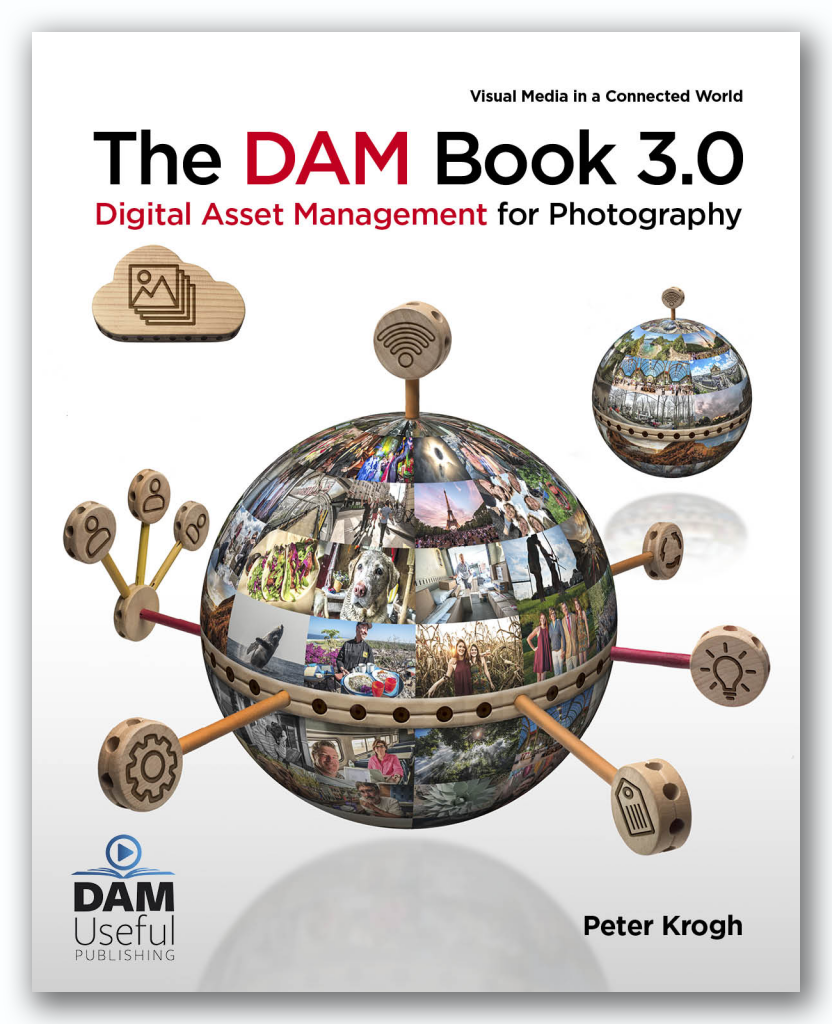Curious about what that means for you and the visual media you manage?
- Format: PDF
- Pages: 544
- Not all links in PDF are active yet.
- This book does not contain embedded movies.
![]() Immediate PDF download: $34.95
Immediate PDF download: $34.95
![]() CD: $39.95 + shipping
CD: $39.95 + shipping
Visual Media in a Connected World
The creation, use and management of digital images has transformed in the last few years. The integration of mobile devices into our daily lives has increased the pace and importance of visual communication. We now expect photographic imagery to be a part of nearly every exchange of information.
Cameras everywhere and everywhen
Mobile devices and cloud services have also created an expectation that we can have access to our important media wherever we are. Indeed, in order to use media, we need to have access to it. If it’s not available when you need it, it might as well not exist.
A New Approach
In the first and second DAM Books, Peter Krogh’s intention was to help photographers build safe and usable private archives, and to show how to get the most out of your images. The developments outlined above have profoundly impacted the landscape of visual media management, and the private archive is no longer sufficient.
The creation and use of visual media is fast becoming a born-connected, online-first experience. Effective management of your images must include connection as an integral element – not an afterthought. Peter Krogh has rewritten The DAM Book 3.0 to help readers navigate this new reality.
Of course, the new connectedness does not mean that the era of keeping the private, self-hosted archive is over. Quite the contrary. It’s as important as ever to build a comprehensive library of your media stored on drives that are in your possession. If you care about preserving the media, this is an essential element of proper management. Peter continues to outline best practice for this, while showing how that private archive can integrate with connected tools.
The DAM Book 3.0 delivers a detailed and unified approach to help you:
- Create order from the chaos of your existing image collection
- Maximize the value and utility of your visual media library
- Build a resilient archive that can withstand multiple threats
With this book, you will learn how to:
- Incorporate cloud services into your workflow
- Determine a strategy for storage, backup and validation of image data
- Use lifecycle analysis to build an efficient and secure workflow
- Use metadata to tag what’s important to you
- Establish intelligent file-naming conventions
- Choose the right file formats for each task
- Employ sound directory strategies
- Design integrated workflow according to best practices
- Integrate your image library with other applications and services
- Evaluate the benefits and limitations of Artificial Intelligence and Machine Learning services
Table of Contents
1 – Visually Speaking
2 – A Digital Photography Ecosystem
3 – Image Objects and File Formats
4 – How Metadata Works
5 – Using Metadata
6 – Logical Structure
7 – Digital Storage Hardware
8 – Backup, Verification and Restoration
9 – Workflow and Lifecycle
10 – Software Options
11 – Export, Share, Embed and Integrate
12 – Migration
The index is available for a more detailed view of what’s inside.
For educators interested in adding this book to their curriculum, a review copy (PDF) of the book is available upon request. Please complete this form to request a copy.

